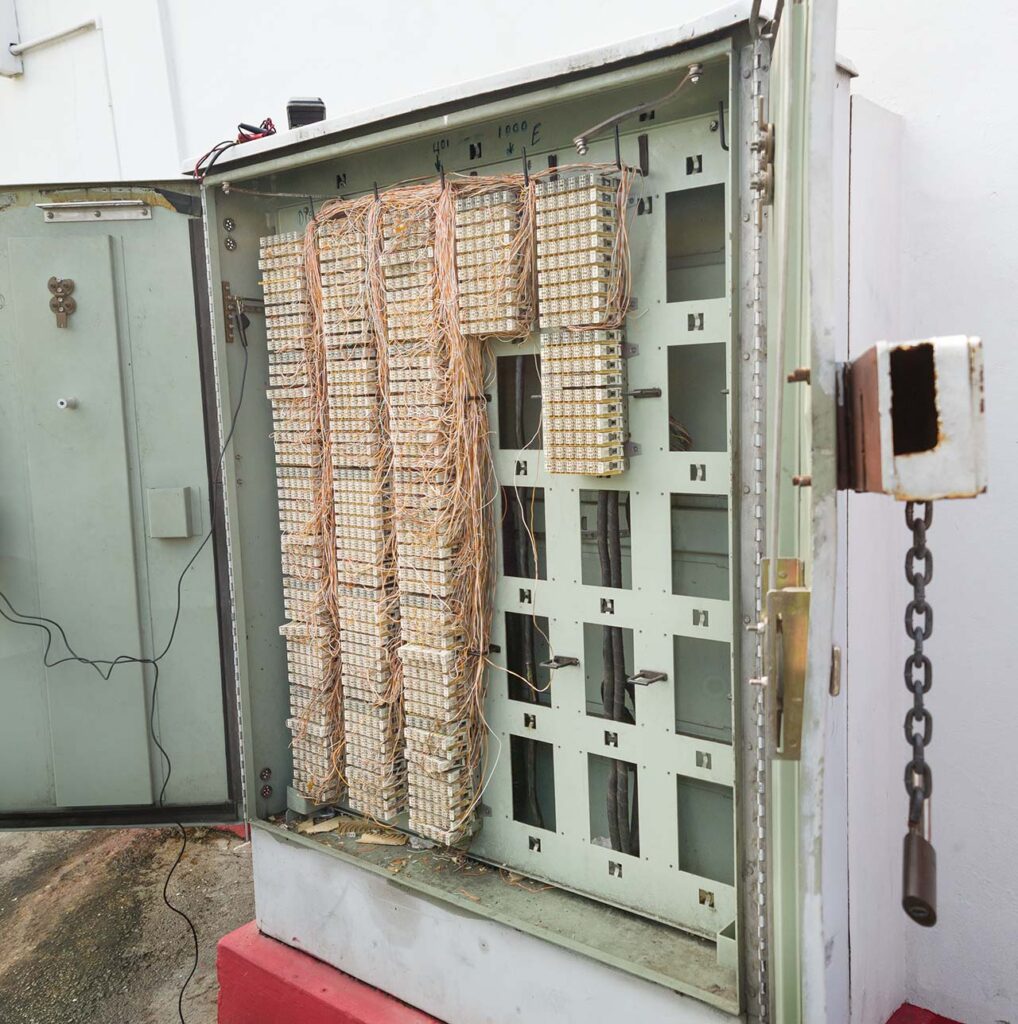- TSTT's copper conclusion is likely to be delayed
- Covid-19 has made the September cut-off for wired connections impossible.
- When the switch comes, users should consider whether they actually need a wired connection
Above: Copper line legacy. Photo by Mark Lyndersay.
BitDepth#1319 for September 13, 2021.
In a note to customers in May, Pernel Roberts, TSTT’s GM for Traditional Services, encouraged customers to sign up for the company’s replacement for its fixed line phone service, WTTX 5G, offering a bonanza month of free service and free local calls to other TSTT customers.
In that letter, Roberts warned of the sunset of the copper wire lines on September 30.
In responses to questions on the matter in July, CEO Lisa Agard noted that the company had migrated 70,000 residential/single-line business customers from the copper network but doubted that the completion date for the project, October 2021, was attainable under covid19 pandemic restrictions.
“We are acutely aware that the copper network continues to age, switching equipment is unsupported by suppliers, and our customers on the copper network require more broadband services,” Agard explained in that interview.
“In light of this, we remain steadfast in our resolve to complete the project.”
The company remained committed to that statement, it said last week.
Given the length of time it’s taken the company to switch even 70,000 of its landline customers – a fraction of those listed in its notoriously bulky phone book – copper-connected users may have a longer runway before they must make a final decision.
But the reality is that TSTT’s old network is aging badly. It’s populated with copper cables that are vulnerable to theft and supported by network infrastructure that’s increasingly obsolete or expensive to replace or repair.
Every landline phone owner should be making a plan for communications continuity beyond the copper wire era.
TSTT isn’t the only option for a cabled connection for phone calls. Both Flow and Digicel offer services that run over Voice over IP (VoIP) protocols that will allow you to plug in your existing telephone and continue to receive and make calls.

If you already have one of these services, it’s an add-on to your existing billing that isn’t particularly expensive. Flow charges $14.50 to add it to an existing Internet service and charges $99 for a 600 minute plan. Digicel’s $99 plan delivers 500 minutes.
Unfortunately, because of a procedural contretemps on fixed number portability, it’s unlikely that you will be able to move your current phone number on another service for the foreseeable future.
It’s also worth considering whether you need a wired phone connection at all. Dramatic improvements in local mobile networks, supported by the significant value of powerful smartphone devices, make the idea of a dumb phone attached to something with a wire seem startlingly retrograde.
After putting my home landline number into maintenance mode (cost: $34.88 per month), while awaiting a trial of the new WTTX system, I ended the service last month.
My situation was somewhat unique. A religious radio station has a call-in number that was close enough to ours that it seemed every other call was from an elderly lady seeking prayers.
Since these calls seemed to cluster after ten at night, the ringer got shut off years ago and use of the phone diminished to nothing over time, making termination an easy choice.
Your use case may differ dramatically from that. As a household, we had years to abandon a wired phone connection.
It’s questionable whether it’s a service that’s really lost. Alternative communications tools make the idea of cabled voice services increasingly irrelevant.
Years ago, in our not particularly sprawling house, I installed an intercom system to answer callers at the door and to connect my office with my living space upstairs
I did it because yelling through closed doors and a poured concrete floor wasn’t working out at all.
Increasingly, our in-house communications are being sent via WhatsApp, because a smartphone is near at hand and nobody wants to walk to the wall-mounted intercom.
Other traditional voice call features are equally creaky. Who leaves voice messages anymore? Who listens to them?
These changes have been creeping up on us for a long time and for a new generation, they are as odd and dated as a vinyl LP or a Walkman.
A telephone cable running down a wall has already joined those artifacts for anyone younger than 25.
Landline phones never accepted text messages (though services in the metropoles turn them into speech for traditonalists) but an SMS text message is impossibly dotish. No images. No clickable phone number. To thanks.
Someday, you may find it difficult to explain to a future generation that already sheds phone numbers like old socks that all that effort was done just to speak with someone.
No text, no video, no links, just talk.
We are living in an era of next generation communications technologies spread across a range of apps and services.
What’s your plan for personal communication going to be?


